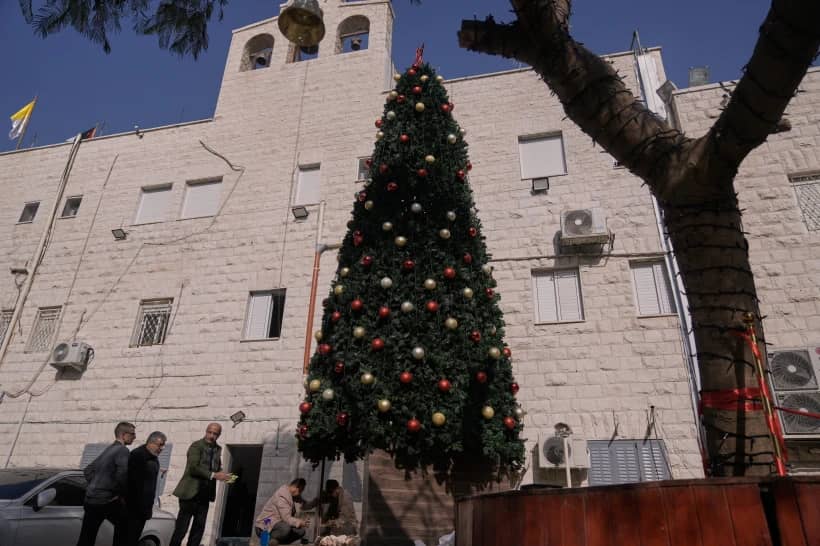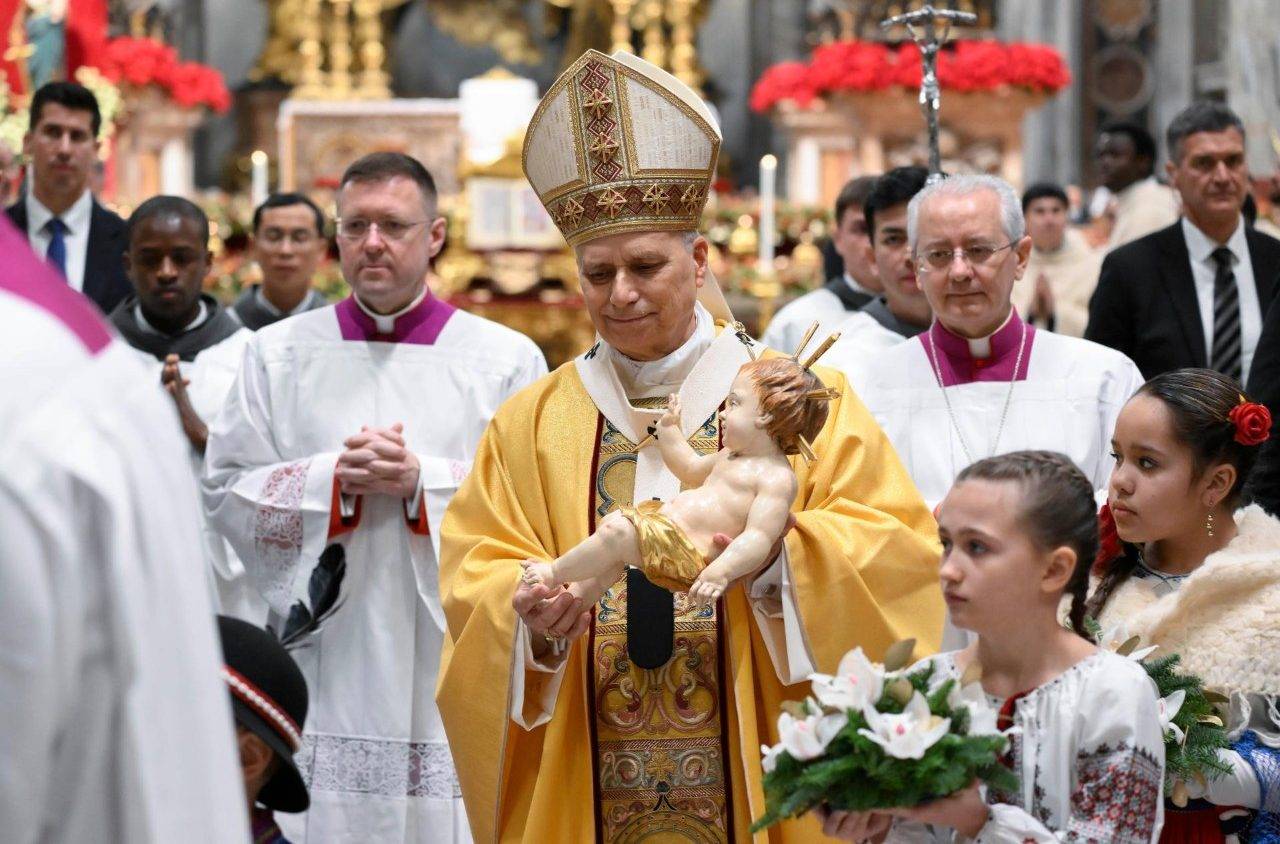[Note: This is a developing story and will be updated throughout the day.]
ROME – Pope Francis relied on favorable decisions made by St. John Paul II and Pope emeritus Benedict XVI in his dealings with ex-cardinal and ex-priest Theodore McCarrick, according to a long-awaited Vatican report issued Tuesday.
“Believing that the allegations had already been reviewed and rejected by Pope John Paul II, and well aware that McCarrick was active during the papacy of Benedict XVI, Pope Francis did not see the need to alter the approach that had been adopted in prior years,” the report states.
In addition, the report also claims that John Paul II appointed McCarrick to the Archdiocese of Washington in November 2000 in part on the basis of “inaccurate and incomplete” information supplied by three of four bishops in New Jersey, who were asked by the pope’s ambassador to respond to allegations of sexual abuse and misconduct against McCarrick.
The report also notes that John Paul may have been influenced in his approach by McCarrick’s own denials in a letter to the pope’s priest secretary, Stanislaw Dziwisz, now the cardinal of Krakow, as well as the pontiff’s experience of “spurious allegations against bishops” in Communist Poland as a way to “degrade the standing of the Church.”
The assertions come in a report promised by the Vatican two years ago, when the scandals surrounding the 90-year-old McCarrick first became public.
The Vatican provided the executive summary of the report to journalists one hour before its release to the public, and this report is based on that summary.
The treatment of Pope Francis’s role is especially critical in light of charges by another former papal ambassador to the US, Italian Archbishop Carlo Maria Viganò, that he had briefed Francis on McCarrick in June 2013 but that the pope failed to take action.
The report says, “no records support Viganò’s account and evidence as to what he said is sharply disputed.”
Officially called a report “On the Holy See’s institutional knowledge and decision-making process related to former Cardinal Theodore Edgar McCarrick (from 1930 to 2017),” the report covers the time from McCarrick’s birth to the years just before allegations of sexual abuse went public.
It is based on documents as well as the testimony from over 90 witnesses, ranging in length from 1-30 hours, including both current and former Holy See officials; cardinals and bishops in the United States; the United States Conference of Catholic Bishops; former priests and seminarians from various dioceses; former secretaries for McCarrick in Metuchen, Newark and Washington, as well as lay people in both the US and Italy.
Information from the Roman Curia was primarily gathered from the Secretariat of State, the Congregation for Bishops, the Congregation for the Doctrine of the Faith, the congregation for Clergy and the Congregation for Divine Worship and the Discipline of the Sacraments.
Also included is information from the Vatican’s embassy to the United States. The report does not include detailed accounts of McCarrick’s financial activities, even though his knack for fundraising is included.
According to the summary, McCarrick rose to power largely due to his reputation as an enthusiastic and zealous priest.
McCarrick under John Paul II
Speaking to McCarrick’s nomination as auxiliary bishop of New York in 1977 under St. Pope Paul VI, the report states that he was selected because he was “strongly recommended,” and until then no reports were made about “improper behavior” with adults or minors.
From there, most of McCarrick’s ecclesial career accelerated under St. Pope John Paul II, who named him bishop of Metuchen in 1981 and archbishop of Newark in 1986 “based on his background, skills and achievements,” as McCarrick had been praised “as a pastoral, intelligent and zealous bishop, and no credible information emerged suggesting that he had engaged in any misconduct.”
By the time McCarrick was appointed archbishop of Washington in November 2000, there had been several complaints against him which the report divided into four categories:
- A priest formerly in Metuchen said he observed McCarrick’s conduct with another priest in 1987 and that McCarrick “attempted to engage in sexual activity” with him later that summer
- Several anonymous letters had been sent to the USCCB, the nuncio at the time (Archbishop Gabriel Montalvo), and various cardinals in the US in 1992 and 1993 accusing McCarrick of pedophilia with his “nephews”
- McCarrick was known to have shared a bed with young adult men in the bishops’ residence in Metuchen and Newark
- McCarrick was known to have shared a bed with adult seminarians at a beach house on the New Jersey shore
Yet despite these complaints, the report states that “Pope John Paul II personally made the decision to appoint McCarrick and did so after receiving the counsel of several trusted advisors on both sides of the Atlantic.”
Each of the complaints were summarized in an Oct. 28, 1999, letter from Cardinal John O’Connor of New York to Montalvo, when O’Connor got wind that McCarrick was being considered as the next archbishop of Washington. Shortly after, his concerns were also shared with John Paul II.
According to the report, complaints about McCarrick had barred three prior episcopal appointments – Chicago in 1997, New York in 1999/2000, and an initial appointment to Washington in July 2000. However, John Paul II “seems to have changed his mind in August/September 2000,” leading to McCarrick’s formal appointment in Washington in November 2000.
Based on the evidence gathered, the report summary suggests that the reasons John Paul changed his mind are related to testimony provided by four New Jersey bishops provided to Montalvo at John Paul’s request, even though the bishops confirmed rumors that McCarrick had slept with seminarians.
The bishops’ responses “confirmed that McCarrick had shared a bed with young men but did not indicate with certainty that McCarrick had engaged in any sexual misconduct,” the summary says, but said three of the four bishops consulted “provided inaccurate and incomplete information” to the Vatican regarding McCarrick’s behavior.
“This inaccurate information,” the summary says, “appears likely to have impacted the conclusions of John Paul II’s advisors and, consequently, of John Paul II himself.”
The report also indicates that John Paul II’s personal secretary, Cardinal Stanislaw Dziwisz, played a role in giving McCarrick John Paul’s ear.
In August 2000, almost a year after John Paul II would have read O’Connor letter, McCarrick wrote to Dziwisz denying the complaints against him, insisting that “in the seventy years of my life, I have never had sexual relations with any person, male or female, young or old, cleric or lay, nor have I ever abused another person or treated them with disrespect.”
This denial, the summary says, “was believed” and officials at the time took the position that if accusations against him went public, they would have been easy to refute or characterize as “gossip,” given in part to the fact that the priest who had complained about McCarrick’s advances had himself abused two teenage boys, and have never provided a signed statement to the Holy See.
McCarrick had admitted to sharing a bed with seminarians at the beach house, calling an “imprudent” decision, but insisting that he had never engaged in sexual conduct and that claims to the contrary, including anonymous letters, were part of a smear campaign.
John Paul, the summary said, had first met McCarrick in the 1970s and the two interacted often in the years that followed. This relationship, it said, “also likely had an impact on the pope’s decision-making.”
In a statement shortly after the report was issued, Archbishop Jose Gomez of Los Angeles, president of the US bishops, expressed gratitude to Francis.
“We are studying these findings, and we are grateful to our Holy Father Pope Francis for his pastoral concern for the family of God in the United States and his leadership in calling the Church to greater accountability and transparency in addressing issues of abuse and the mishandling of abuse claims at every level,” Gomez said.
McCarrick under Benedict XVI
According to the report’s summary, when Benedict XVI took office in 2005, the information that came in on McCarrick was largely similar to what was sent under John Paul II.
After first taking office Benedict extended McCarrick’s mandate in Washington by two years, given that it had been seen “as successful.”
Though specifics weren’t included in the summary, it said new details emerged related to the allegations of “Priest 1” in 2005, prompting the Holy See to “reverse course” and seek a replacement for McCarrick, who retired in 2006.
For two years, Vatican officials grappled with how to handle McCarrick, the summary says, noting that during this time, Viganò sent two separate memoranda in 2006 and in 2008 to his superiors referring to allegations and rumors of McCarrick’s misconduct in the 1980s and voicing concern that “a scandal could result” given that information had already begun to circulate.
When Viganò suggested a canonical process be opened to determine whether the accusations were true, then-Secretary of State Cardinal Tarcisio Bertone and Argentine Cardinal Leonardo Sandri, at the time sostituto, a powerful position akin to the pope’s chief of staff, shared his concerns and presented the issue directly to Benedict XVI.
At the time, he opted against a canonical process and instead made the decision to “appeal to McCarrick’s conscience and ecclesial spirit” by encouraging him to keep a low profile and minimize travel “for the good of the Church.”
In 2006, Cardinal Giovanni Battista Re, who oversaw the Vatican’s Congregation for Bishops, instructed the Vatican’s ambassador to the US at the time, Archbishop Pietro Sambi, to communicate the instructions to McCarrick orally.
Two years later, in 2008, and with the approval of Benedict XVI, Re provided these instructions to McCarrick in writing. However, while Benedict had given the green light, the report summary insists that “the indications did not carry the popes explicit imprimatur, were not based on a factual finding that McCarrick had actually committed misconduct, and did not include a prohibition on public ministry.”
The decision not to pursue canonical action under Benedict XVI, the summary says, was based on several factors: the fact that at the time, there were no credible accusations of child abuse; that McCarrick had sworn on his “oath as a bishop” that he was innocent; that the allegations of misconduct dated back to the 1980s; and there had been no indications of any recent misconduct.
Since there were no formal canonical sanctions or explicit orders from the Holy See against him, McCarrick continued to stay active both in the United States and overseas, carrying out public ministry and traveling often, at times with the approval of officials in the Roman Curia or the Vatican embassy to the US.
According to the summary, toward the end of Benedict XVI’s papacy another priest from Metuchen came forward to Viganò while he was serving as nuncio to the US to inform him that someone referred to as “Priest 3” had filed a lawsuit alleging that there had been “overt sexual conduct” between him and McCarrick in 1991.
Viganò then wrote to Canadian Cardinal Marc Ouellet, who by then had been tapped to lead the Vatican’s office for bishops, to inform him of the matter. In response, Ouellet in 2012 ordered Viganò to conduct an investigation with certain diocesan officials and Priest 3 to determine the credibility of the accusations.
However, according to the summary, “Viganò did not take these steps and therefore never placed himself in the position to ascertain the credibility of Priest 3.”
McCarrick continued to stay active and maintained a frequent travel schedule.
Follow Elise Ann Allen on Twitter: @eliseannallen














